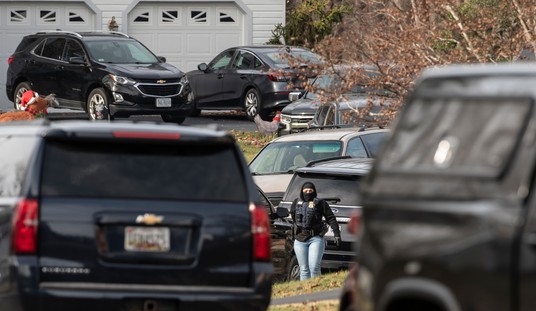Fundy’s long and Fundy’s wide,
Fundy’s fog and rain and tide;
Never see the sun or sky,
Just the green wave going by.
—Gordon Bok
* * * * *
Tropical Storm Kyle’s maximum sustained winds increased to 60 mph overnight, and Tropical Storm Warnings have been issued for Bermuda, as a precaution — although Kyle is expected to stay well to the island’s west, and tropical storm force winds are unlikely to impact folks there, barring a course change.
The forecast calls for Kyle to become a Category 1 hurricane in 36 hours, as it passes several hundred miles east of the Carolinas late Saturday and accelerates northward toward eastern Maine or the Canadian Maritimes. However, this projected intensification may not happen. Kyle is currently suffering from heavy shear, and as Dr. Jeff Masters notes, “unless the shear relaxes, allowing Kyle’s heavy thunderstorms to wrap all the way around the center, intensification into a hurricane will be difficult.”
The NHC discussion says the intensity forecast is considered “problematic.” But, for what it’s worth, slow intensification into a weak hurricane is the current, official expectation. After 48 hours,
KYLE IS EXPECTED TO MOVE NORTH OF THE GULF STREAM INTO VERY COLD WATER. WHILE THIS AND THE EXPECTED ONSET OF EXTRATROPICAL TRANSITION SHOULD CAUSE KYLE TO WEAKEN…IT MAY STILL BE OF HURRICANE STRENGTH WHEN THE CENTER REACHES NEW ENGLAND OR THE MARITIMES.
Masters notes, however, that “the west side of Kyle will remain relatively thunderstorm-free at landfall, due to strong upper-level winds from the west creating high wind shear. According to the forecast wind radius from NHC, tropical storm force winds of 39 mph and higher will miss Massachusetts, but may affect eastern Maine.” Bottom line, this is not mainly a wind event, but a rain event:
Kyle’s main threat is heavy rain. Kyle’s rains will primarily affect Nova Scotia and New Brunswick at landfall on Monday morning. However, Kyle should pull copious amounts of tropical moisture and the remains of the unnamed storm that hit South Carolina last night northwards into Canada and northern New England. This will create potential serious flooding problems early next week in the region. NOAA is forecasting up to eight inches of rain could fall in New England over the next five days.
The UKMET model is forecasting that Kyle will stall after landfall. If this forecast verifies, there is the possibility that extremely heavy rains in excess of twelve inches will fall over northern New England, New Brunswick, and Nova Scotia next week. Near-record flooding with heavy damage would likely result. However, the other models do not go along with this scenario, and rain amounts in the 6-8 inch range are more likely for northern New England, New Brunswick, and Nova Scotia.
Interestingly, the current official forecast track would bring Kyle’s right-front quadrant directly over the Bay of Fundy, between Nova Scotia and New Brunswick. I say this is “interesting” because Fundy has the highest tides in the world. I honestly don’t know how much damage a potential storm surge could do there — on the one hand, a Category 1 hurricane doesn’t cause a huge surge, but on the other hand, the right-front quadrant of an accelerating storm can be rough because you have to add the forward speed to the wind speed. In any case, because of Fundy’s extremely variable tides, it would make a big difference precisely when Kyle would hit.
Another question that I don’t know (or remember) the answer to is, how much low-lying development is there along Fundy’s shore that would be particularly damaged by a moderate storm surge? Perhaps not much, as they surely must be accustomed to tidal problems up there. On the other hand, I believe a New Brunswick or Nova Scotia landfall by a tropical cyclone moving almost due north would be unusual; it’s my impression that storms at that latitude are usually recurving to the northeast already, and thus just sort of clip the Maritime provinces. (Somebody correct me I’m wrong on this.)
(Full disclosure: when I was a kid, my parents and I traveled numerous times to Nova Scotia and New Brunswick for summer vacations. I’ve seen the tidal bore at Truro not once, but twice. And I’m a big fan of Maritime folk music; hence the Gordon Bok quote above.)
P.S. Dr. Masters also writes about the unnamed storm, 94L, that hit the Carolinas yesterday:
The unnamed storm that moved ashore over South Carolina/North Carolina last night continues to bring heavy rain and strong winds all along the eastern U.S. … The storm dumped 4.16″ of rain in Wilmington, NC, setting a new daily rainfall record for that city. A storm surge of four feet was observed in Carteret County, NC, and the road to the North Carolina Outer Banks was flooded by the ocean at several points during the storm.
Evidence suggests the storm was probably subtropical or tropical at landfall, and could have received the name Laura. However, one of the criteria for getting a name is that a storm must persist as a subtropical or tropical storm for a “reasonable period of time”. This season, it seems that NHC has been waiting longer than in the recent past (the 1990s and 2000s) to give storms names. However, in the 1970s and 1980s, a “reasonable period of time” was usually judged to be a day or longer. I doubt that yesterday’s storm would have gotten a name during Nell Frank’s tenure as director of NHC from 1974-1987. Thus, yesterday’s decision not to name this storm is probably consistent with how things would have been done back in that era. There will always be a grey area in this regard, and NHC will inevitably get complaints about decisions to name or not name storms. If they had named this system Laura, they would have gotten complaints that are too quick to give names to storms that do not deserve them, and thus are artificially inflating tropical storm statistics to make it appear that global warming is increasing the number of tropical storms. Last night’s unnamed storm fell solidly in this grey area, and there is no clear-cut “right” answer as to whether the storm deserved a name or not.
Elsewhere in the tropics, there are two other areas of disturbed weather to watch, but neither appears likely to imminently develop.









Join the conversation as a VIP Member